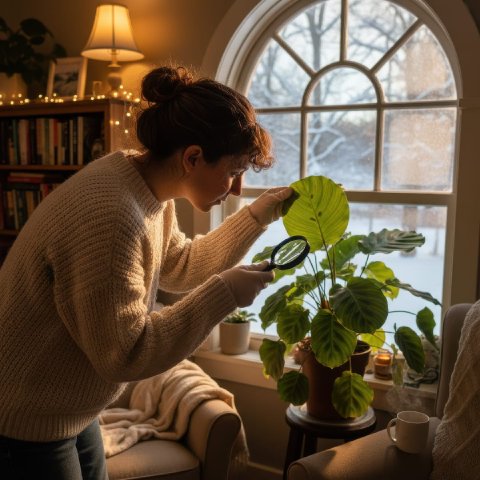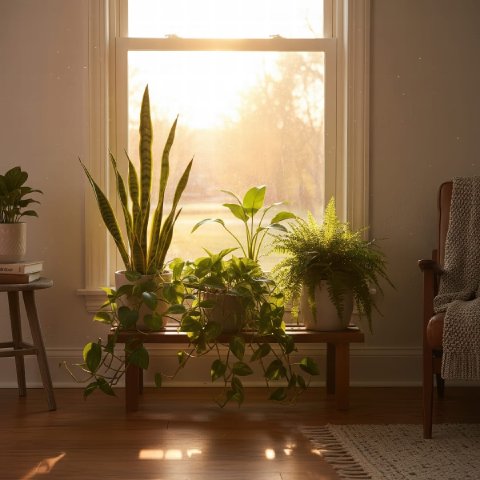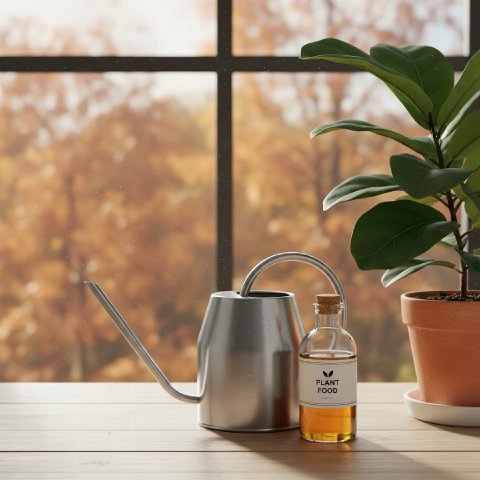🪴 In This Guide 🪴
🧪 Why Plants Need Less Fertilizer in Winter
Fertilizer fuels new growth, but growth depends on light. During short winter days, your plants simply can’t use as many nutrients. The result? Minerals build up in the soil, forming a white crust on top or burning tender roots.
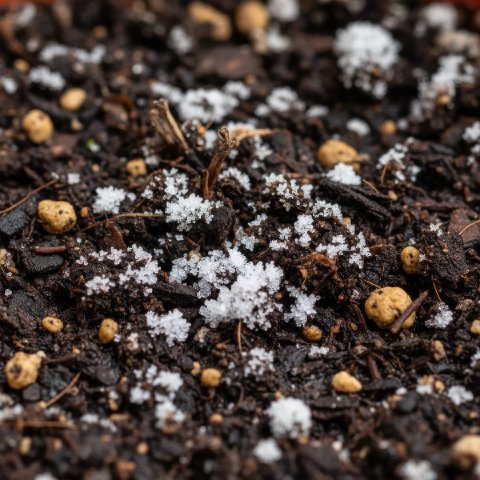
If your plant hasn’t grown new leaves in weeks, skip the fertilizer until spring. The only real exception is for plants growing under strong grow lights. If they’re still producing new leaves, you can feed them gently once a month at half strength.
📋 Simple Rule of Thumb
Here’s an easy guide to remember when deciding whether to fertilize:
- Actively growing plants: Feed once a month at half strength.
- Resting or slow-growing plants: Skip feeding until spring.
- Succulents and cacti: No fertilizer from October through March.

If you’re unsure, look at your plant’s new growth. Shiny, firm leaves or small fresh shoots mean it’s awake and can handle some feeding.
Dull, droopy, or static plants are resting-give them time off.
🥄 How to Feed Gently (If You Must)
For the few plants that still grow in winter-usually tropicals under lights-stick to gentle feeding.
Dilute and Go Easy
Use a balanced, water-soluble fertilizer like 10-10-10 or 20-20-20, but mix it at half strength. Always water your plants first, then feed. Applying fertilizer to dry soil can shock the roots and lead to burns.

Try Organic or Slow-Release Fertilizers
Organic or slow-release options are gentler. They release nutrients gradually and reduce the risk of buildup-perfect for winter’s slower pace.
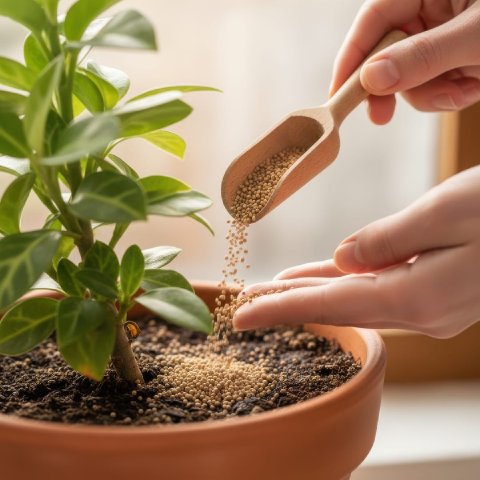
⚠️ Watch for Warning Signs
If your plants develop brown tips, yellow edges, or a crusty film on the soil surface, you’ve likely overfed. That buildup of salts can make it harder for roots to absorb water.

To fix it: Flush the pot with plenty of plain water until it drains freely, washing away excess fertilizer. Then, let the soil dry out and skip feeding for at least a month.
🌱 When to Start Feeding Again
By late February or March, you’ll notice new life-fresh green shoots, brighter leaves, and soil that dries faster.
That’s your cue to resume regular feeding. Start slowly, with diluted fertilizer every few weeks, then increase as the light strengthens.
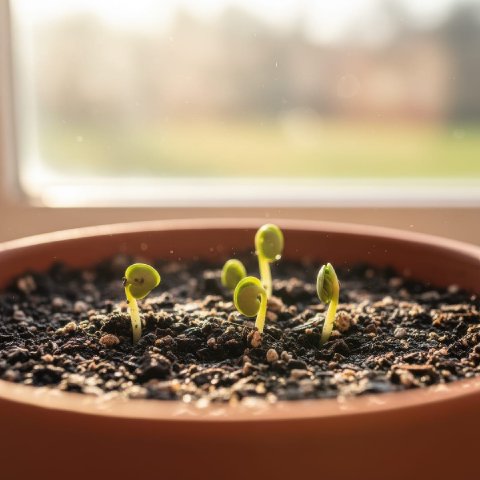
Winter fertilizing isn’t about rigid schedules-it’s about observation.
Most plants prefer a quiet season to rest, and holding back fertilizer now sets them up for a stronger comeback in spring.
📚 Related Reading
For a complete seasonal overview, check out our Winter Houseplant Care Checklist.
You might also like:
